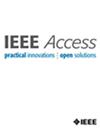Understanding and Optimizing Oxygen Plasma Treatment for Enhanced Cu-Cu Bonding Application
IF 3.4
3区 计算机科学
Q2 COMPUTER SCIENCE, INFORMATION SYSTEMS
引用次数: 0
Abstract
This study investigates the optimization of O2 plasma treatment conditions to enhance Cu-Cu bonding. The O2 plasma treatment conditions were optimized using Design of Experiments (DOE), adjusting three parameters: O2 flow rate, plasma power, and treatment time, to minimize oxidation while maximizing surface energy. X-ray photoelectron spectroscopy (XPS) was employed to calculate the Cu atomic percentage (at%) at the surface and at a depth of 25 seconds of etching, while water contact angle (WCA) measurements assessed surface energy. The results indicated that decreasing the O2 flow rate reduced oxidation without significantly impacting surface energy. Plasma power and treatment time were optimized through a balanced approach. The identified optimal conditions were an O2 flow rate of 50 sccm, plasma power of 50 W, and a process time of 20 seconds. Subsequent SEM analysis confirmed a wavy bonding interface indicative of strong Cu diffusion bonding, resulting in approximately a 40% increase in shear strength. The findings suggest that controlled O2 plasma treatment effectively enhances bonding strength, providing direction for the optimization of O2 plasma for Cu bonding in advanced packaging technologies and hybrid bonding applications.求助全文
约1分钟内获得全文
求助全文
来源期刊

IEEE Access
COMPUTER SCIENCE, INFORMATION SYSTEMSENGIN-ENGINEERING, ELECTRICAL & ELECTRONIC
CiteScore
9.80
自引率
7.70%
发文量
6673
审稿时长
6 weeks
期刊介绍:
IEEE Access® is a multidisciplinary, open access (OA), applications-oriented, all-electronic archival journal that continuously presents the results of original research or development across all of IEEE''s fields of interest.
IEEE Access will publish articles that are of high interest to readers, original, technically correct, and clearly presented. Supported by author publication charges (APC), its hallmarks are a rapid peer review and publication process with open access to all readers. Unlike IEEE''s traditional Transactions or Journals, reviews are "binary", in that reviewers will either Accept or Reject an article in the form it is submitted in order to achieve rapid turnaround. Especially encouraged are submissions on:
Multidisciplinary topics, or applications-oriented articles and negative results that do not fit within the scope of IEEE''s traditional journals.
Practical articles discussing new experiments or measurement techniques, interesting solutions to engineering.
Development of new or improved fabrication or manufacturing techniques.
Reviews or survey articles of new or evolving fields oriented to assist others in understanding the new area.
 求助内容:
求助内容: 应助结果提醒方式:
应助结果提醒方式:


